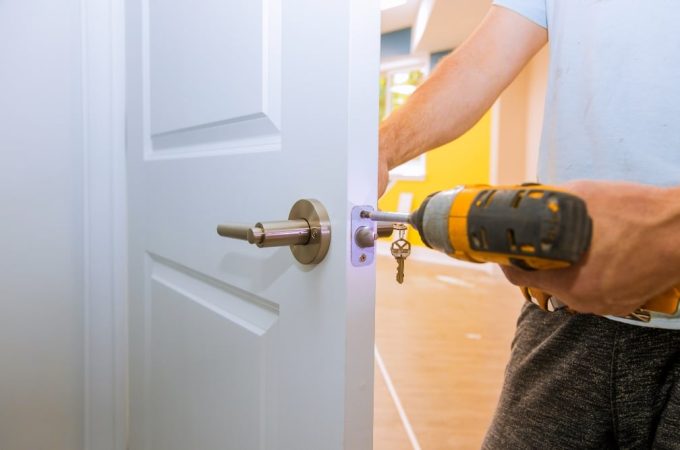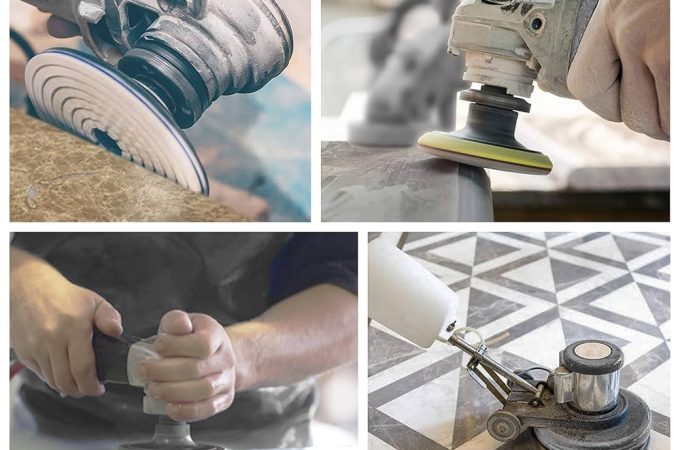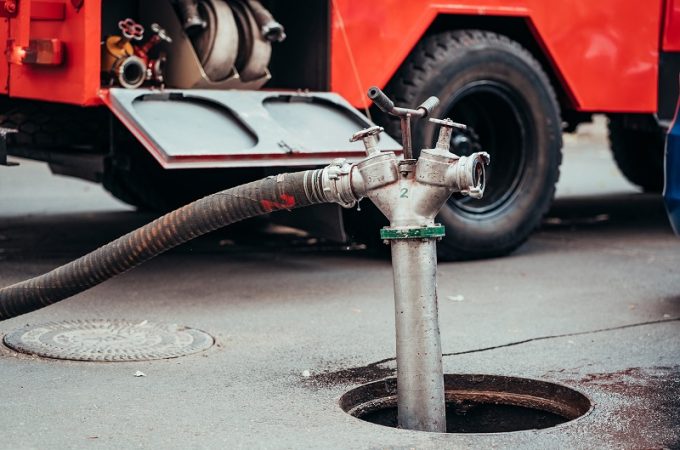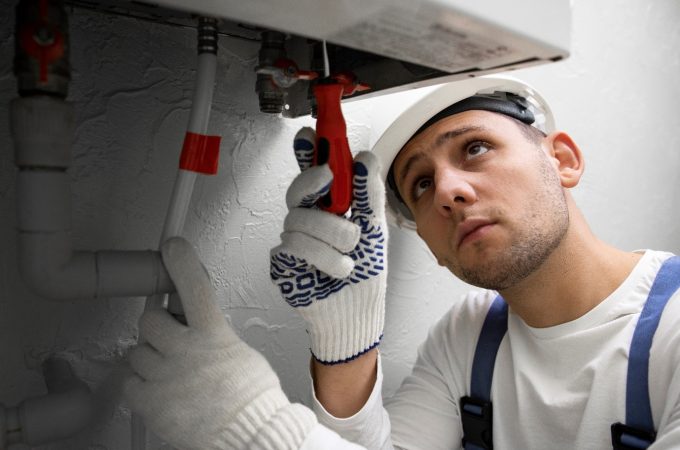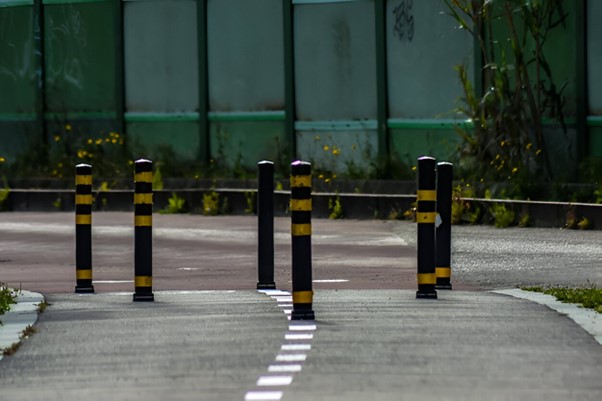
The Best Way To Choose & Put in Place Commercial Security Bollards
In an increasingly complex world, how do we ensure the safety of our commercial properties and the people who inhabit them? What measures can we take to protect against accidental collisions, intentional security breaches, or even terrorist attacks? These are critical questions that property owners, managers, and security professionals grapple with daily. One often overlooked but crucial element in the arsenal of commercial property protection is the humble safety bollard.
But what exactly are safety bollards, and why are they so important? Safety bollards are sturdy, short vertical posts designed to create a protective barrier between vehicles and pedestrians or buildings. They serve as silent sentinels, standing guard against a variety of potential threats. From preventing ram-raid attacks on storefronts to delineating safe pedestrian zones in busy parking lots, safety bollards play a multifaceted role in commercial property security.
In this comprehensive guide, we’ll explore the world of commercial safety bollards in depth. We’ll delve into the various types available, from fixed and removable to retractable and flexible options. We’ll examine the key considerations when choosing bollards, including site assessment, regulatory compliance, and aesthetic integration. Moreover, we’ll investigate the materials used in bollard construction, innovative design features, installation best practices, and maintenance requirements. By the end of this article, you’ll be equipped with the knowledge to make informed decisions about implementing security bollards on your commercial property, ensuring both security and peace of mind.
Types of Security Bollards for Commercial Properties
When it comes to protecting commercial properties, one size does not fit all. The diversity of safety bollards available on the market reflects the varied needs of different commercial environments. Understanding the types of bollards and their specific applications is crucial for making an informed decision that balances security, functionality, and aesthetics.
Fixed bollards are the workhorses of the bollard world. These permanent structures are typically made of concrete or steel and are deeply anchored into the ground. They provide unwavering protection against vehicle impacts and are ideal for high-risk areas or locations where a constant barrier is necessary. Concrete bollards offer cost-effective, no-frills protection, while steel bollards can be customized with decorative sleeves to enhance the visual appeal of a property. For businesses that want to make a statement while ensuring safety, decorative fixed bollards can be designed to complement the architectural style of the building.
Removable bollards offer a flexible solution for areas that require occasional vehicle access. These bollards can be easily inserted into or removed from ground sockets, allowing property managers to adapt the space as needed. They’re particularly useful for loading zones, emergency access routes, or temporary event spaces. Retractable bollards take this concept a step further by offering automated rising and lowering capabilities. These sophisticated systems provide seamless access control, making them perfect for parking garages, secure compounds, or any location where frequent authorized vehicle entry is required.
Flexible bollards, also known as bendable or reboundable bollards, serve a unique purpose in the commercial safety landscape. These resilient posts are designed to withstand impacts by bending and then returning to their original position. While they may not provide the same level of security as their rigid counterparts, flexible bollards are excellent for areas with tight turning radiuses or locations where occasional minor collisions are expected. They minimize damage to both vehicles and the bollards themselves, making them a cost-effective choice for certain applications.
Key Considerations When Choosing Security Bollards
Selecting the right safety bollards for your commercial property is a decision that requires careful consideration of multiple factors. It’s not just about picking the strongest or most attractive option; it’s about finding the perfect balance between security, functionality, and aesthetic appeal. So, what should you keep in mind when embarking on this important decision-making process?
First and foremost, a thorough site assessment and risk analysis are crucial. This involves evaluating the specific threats your property faces, from accidental vehicle collisions to deliberate ram-raid attempts. Consider the traffic patterns around your property, the types of vehicles that frequent the area, and any historical incidents that may inform your security needs. This assessment will help you determine the level of impact resistance required and guide your choices in terms of bollard type, material, and placement.
Compliance with local regulations and standards is another critical factor. Different jurisdictions may have specific requirements for bollard installation, especially in public spaces or areas with high pedestrian traffic. These regulations might dictate the minimum distance between bollards, their height, or even their visual characteristics. It’s essential to research and adhere to these standards to ensure your installation is not only effective but also legally compliant.
Aesthetic considerations should not be overlooked, particularly for businesses where image and curb appeal are important. While security is paramount, bollards don’t have to be eyesores. Many manufacturers offer decorative options that can complement or enhance your property’s architectural style. From sleek, modern designs to classic, ornate styles, there’s likely a bollard design that can meet your security needs while contributing positively to your property’s visual appeal. Remember, the goal is to blend security seamlessly with design, creating a safe environment that still feels welcoming and attractive to customers and employees alike.
Material Matters: Exploring Bollard Construction
The material used in bollard construction plays a pivotal role in determining its strength, durability, and overall effectiveness. Each material comes with its own set of advantages and potential drawbacks, making it crucial to understand these differences when selecting bollards for your commercial property. Let’s explore some of the most common materials used in bollard manufacturing and their unique characteristics.
They offer superior impact resistance, making them an excellent choice for high-security areas or locations where vehicle attacks are a significant concern. Steel bollards can be galvanized or powder-coated to enhance their resistance to corrosion and weathering. Their versatility also allows for a wide range of designs, from simple, utilitarian posts to more elaborate decorative options. However, steel bollards can be more expensive than some alternatives and may require more maintenance to prevent rust in harsh environments.
Concrete bollards offer a cost-effective solution for many commercial properties. They provide substantial mass and stability, making them effective at stopping vehicles. Concrete bollards can be cast in various shapes and sizes, and their surface can be textured or painted to improve aesthetics. One significant advantage of concrete is its low maintenance requirements – it doesn’t rust or corrode like metal. However, concrete bollards are permanent structures and lack the flexibility of some other options. They may also chip or crack over time, especially in areas with freeze-thaw cycles.
Stainless steel bollards combine strength with sleek, modern aesthetics. They are highly resistant to corrosion, making them ideal for coastal areas or locations exposed to harsh weather conditions. Stainless steel bollards maintain their appearance with minimal maintenance, often requiring just occasional cleaning to keep their luster. While they can be more expensive than standard steel or concrete options, their longevity and low maintenance needs can make them cost-effective in the long run.
Design Features That Enhance Safety and Functionality
When it comes to safety bollards, effectiveness goes beyond mere strength and durability. Innovative design features can significantly enhance both the safety aspects and functionality of bollards, making them more than just static barriers. These features can improve visibility, increase versatility, and even add aesthetic value to your commercial property.
Reflective strips and high-visibility coatings are crucial design elements, especially for bollards installed in areas with vehicular traffic. These features ensure that the bollards are easily visible to drivers, even in low-light conditions or inclement weather. Reflective strips can be applied in various patterns, not only enhancing visibility but also contributing to the overall design aesthetic. High-visibility coatings, often in bright colors like yellow or orange, serve a dual purpose of making the bollards stand out while also potentially complementing your property’s color scheme.
Illuminated bollards take visibility a step further by incorporating lighting elements. These can range from simple reflectors to sophisticated LED systems that can be programmed for different levels of brightness or even color-changing capabilities. Illuminated bollards are particularly valuable in parking lots, pedestrian walkways, or any area where nighttime security is a concern. They not only mark boundaries and obstacles but also contribute to the overall lighting scheme of your property, potentially reducing the need for additional light fixtures.
For high-risk areas or properties requiring maximum security, anti-ram and crash-rated bollards are essential. These bollards are engineered and tested to withstand high-speed impacts from large vehicles. They often feature reinforced construction, deeper foundations, and may incorporate energy-absorbing designs to dissipate the force of a collision. While these bollards prioritize function over form, many manufacturers now offer decorative shells or covers that can be placed over the structural core, allowing for a blend of maximum security and aesthetic appeal.
Installation Best Practices
Proper installation of security bollards is just as crucial as selecting the right type and design. Even the most robust bollard will fail to provide adequate protection if it’s not installed correctly. Understanding and following installation best practices ensures that your bollards will perform as intended, providing maximum security and longevity.
One of the most critical aspects of bollard installation is proper spacing and placement. The gap between bollards should be wide enough to allow pedestrian access (including wheelchairs and strollers) but narrow enough to prevent vehicle passage. Typically, a spacing of 3 to 5 feet is recommended, but this can vary based on specific security requirements and local regulations. Placement should also consider traffic flow, potential impact angles, and the layout of the protected area. Strategic placement can create effective vehicle barriers while maintaining an open, welcoming atmosphere for pedestrians.
Foundation requirements vary depending on the type of bollard and the level of impact resistance needed. Fixed bollards generally require deep, reinforced concrete foundations to provide adequate anchoring. The depth and width of the foundation will depend on factors such as soil conditions, expected impact forces, and the bollard’s height above ground. Removable and retractable bollards need specially designed ground sockets that allow for easy insertion and removal while providing stable support when in use. It’s crucial to follow manufacturer specifications and local building codes when preparing foundations.
While some property owners may be tempted to handle bollard installation as a DIY project, working with professionals is often the wisest choice, especially for complex installations or high-security applications. Professional installers have the expertise to assess site conditions, prepare proper foundations, and ensure that bollards are installed to withstand anticipated impacts. They can also navigate local permitting processes and ensure compliance with relevant regulations. For temporary installations or simple removable bollards, DIY installation may be feasible, but it’s always worth consulting with experts to ensure you’re not compromising on safety.
Conclusion
As we conclude our comprehensive exploration of safety bollards for commercial properties, it’s clear that these seemingly simple structures play a vital role in safeguarding our spaces and the people within them. From the bustling sidewalks of urban centers to the expansive parking lots of suburban shopping malls, bollards stand as silent sentinels, offering protection against both accidental collisions and intentional threats.
The world of safety bollards is surprisingly diverse, with options ranging from basic concrete posts to sophisticated retractable systems. This variety allows property owners and managers to tailor their security solutions to their specific needs, balancing factors such as risk level, aesthetic preferences, and budgetary constraints. Whether you opt for the unyielding strength of fixed steel bollards, the flexibility of removable options, or the high-tech appeal of smart bollards, the key is to make an informed decision based on a thorough assessment of your property’s unique requirements.
Throughout this guide, we’ve emphasized the importance of considering not just the bollards themselves, but also their proper selection, installation, and maintenance. A well-chosen bollard poorly installed is just as ineffective as an inferior product. By following best practices in site assessment, adhering to local regulations, and working with experienced professionals when necessary, you can ensure that your investment in safety bollards pays dividends in enhanced security and peace of mind.
As technology advances and urban landscapes evolve, we can expect to see continued innovation in the field of commercial safety bollards. From integration with smart city infrastructure to the development of more sustainable and eco-friendly options, the future of bollard design holds exciting possibilities. However, the fundamental principle remains unchanged: the best safety measures are those that protect effectively while seamlessly integrating into the environment they serve.
In closing, remember that investing in safety bollards is not just about complying with regulations or deterring potential threats. It’s about creating spaces where people feel secure, where businesses can thrive, and where the balance between accessibility and protection is thoughtfully maintained. By choosing the right safety bollards for your commercial property, you’re not just installing a physical barrier – you’re making a statement about your commitment to the safety and well-being of all who interact with your space.


